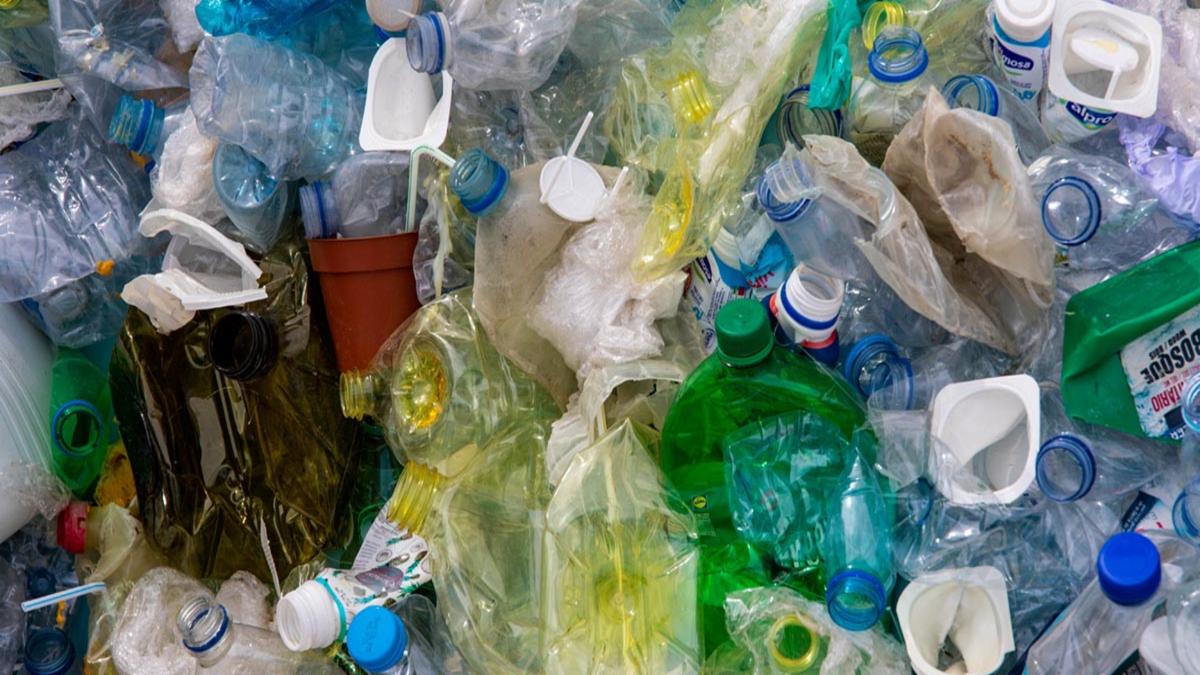Article Body
The Microplastic Recycling Market involves technologies, solutions, and services focused specifically on recovering, processing, and using microplastic particles (whatever they were turned into; any definition of microplastic is less than 5mm) that came from degraded consumer plastics, discarded industrial leftovers, or planned products such as microbeads or microfibres.
Microplastic is not a regular recycling product because management of microplastic involves water and soil technologies that filter out contaminants, which may require unusual chemical processes to remove contaminants from water, soil, or industrial waste where it can be recovered and reused or in some way eliminate impacts on the environment.
microplastic recycling market size
According to NextGen Statistics, the global microplastic recycling market is expected to be valued at approximately $719.99 million by 2035.
This is solid growth over time and is due to rising levels of funding, regulatory support and recognition of corporate responsibility.
• In 2025 the market is projected to reach over $330 million in market size, and growing each year.
• For long-term projections, this could indicate a near doubling in size in the next 10 years assuming increasing industry and society commitments to addressing microplastic pollution.
• The market size will grow from US$245.78mn in 2024 to US$719.99mn by 2035.
• This is a Compound Annual Growth Rate (CAGR) of 9.6% from the forecast period of 2024 – 2035.
The optimism for strong future growth may correspond to increased environmental responses to microplastic pollution, domestic pressure to regulate microplastics globally, advances in technologies of recycling, and the increased use of microplastic recycling.
The market has multiple segments based on product types, end-use industries (packaging, textiles, automotive, agriculture, consumer goods), recycling technologies, and geographical areas—all contributing to the overall expansion.
This projection aligns with industry intelligence and can be used with confidence for market research, investment support, and planning in sustainability-oriented businesses.
Regional Overview: Where Growth is Taking Place
Asia-Pacific
The Asia-Pacific region is expected to grow fastest in the microplastic recycling market, projected at a CAGR of roughly 10.1% in the next several years.
Growth is expected from forming industrialized areas, factors of consumers goods manufacturing and regulatory forces, including microplastic emission and leakage limitation.
The countries of China, Japan, South Korea are investing heavily to develop recycled microplastic materials through investments in state-of-the-art recycling infrastructure.
Europe
Europe has the largest share of market microplastic recycling driven by the European Union's environmental policies and practices to adopt sustainability standards.
The EU Plastics Strategy and Extended Producer Responsibility (EPR) policies are generating high capacity recycling facilities, with industry leaders such as Germany and the UK backing these investments through technology and regulation.
Segmentation Analysis: What’s Driving Demand?
By Product
• Primary
• Secondary
By End Use
• Packaging
• Agriculture
• Consumer goods
• Textile
• Automotive & Transportation
• Building & Construction
• Others
By Technology
• Pyrolysis
• Gasification
• Solvolysis
By Recycling Process
• Mechanical Recycling
• Chemical Recycling
• Thermal Recycling
• Biological Recycling
Customization by End-Use Industry
The microplastic recycling market can be categorized by the end-use industry, each having its own sustainability objectives and materials requirements:
• Packaging: Recycled microplastics are utilized in sustainable packaging efforts to lessen reliance on virgin plastics and help meet sustainability goals across the sector.
• Textiles: The fashion and apparel industry uses microplastic recycling as a means to create sustainable fabrics and garments, and participate in the circular economy.
• Automotive: Lightweight components made of recycled plastics improve the fuel efficiency and environmental profile of vehicles.
• Construction: Recycled microplastics are being used in insulation, tiles, and other construction materials to create a sustainable infrastructure.
• Electronics and Medical Devices: The electronics and medical device industries are incorporating microplastics recycling to support greener product lines and non-invasive equipment.
By Source
• Consumer products
• Industrial processes
• Personal care products (including microbeads, microfibers)
By Technology
• Mechanical Recycling: Physically separating microplastics via filtration and separation.
• Chemical recycling: this process, breaking PVC materials down to the molecular level may assist plastic in being reused.
• Thermal processing: Turn microplastics into energy or new feedstocks.
Key Market Drivers and Trends
Regulatory Omega
Global governing bodies are ramping up regulations on microplastic waste and pollution, forcing industries to adapt to and/or invest in recycling technology, which responds to the regulatory pressures. As the EU´s focus is shifting to circular economy models, much of the world is investing in recycling facility upgrades and deploying advanced microplastic capture technologies.
Shift in Consumer Behavior
Consumers are becoming more cognizant of the deleterious impacts of microplastics on marine life, ecosystems and even human health – it enters the water and food chains, polluting everything it touches.
Public and NGO campaigns and pressure are forcing companies to engage in sustainable packaging practices and sourcing - stimulating market expansion for recyclable alternatives.
Additionally, technological advancement in microplastic detection, filtration, and separation technologies is progressing, allowing recyclers to economically and safely recycle even the smallest plastics in volumes.
Government and the private sector funding is increasing for R & D investments, generating new patents and standards for the quality of the end product.
Demand from Industry
Packaging, textiles, automotive and construction industries are currently sourcing certified recycled microplastics as raw materials to capture their ESG (Environmental, Social and Governance) return and meet the consumer demands for sustainable looking products.
Growth Opportunities
• As more industries commit to adopting sustainable practices, the demand for high-quality recycled microplastics will only increase.
• Investments are being made into smart waste management tactics and AI managed sorting solutions, increasing recovery rates while reducing associated costs.
• External growth opportunities exist when entering new markets - particularly emerging international markets (e.g. Asia-Pacific, Latin America).
Dive Into Our In-Depth Market Analysis: https://nextgenintelligencestats.com/microplastic-recycling-market
Challenges
• Large-scale microplastic recycling is complicated due to operational costs and increasingly sophisticated, complex technologies.
• Regulatory differences across regions creates operational challenges for cross-border recycling initiatives.
• Quality assurance and widespread skepticism about recycled materials paved the way for new testing agencies and stricter protocols to verify material safety and quality.
Key players in the global microplastic recycling market include leading innovators and established firms that are accelerating development in the recycling technology space while also extending their footprint in accordance with NextGen Intelligence Stats and validated releases from third parties within this industry.
Leading Companies
- Ambercycle
- AMP Robotics
- BlueAlp
- Calyxia
- Carbios
- Ecofario
- Exxon Mobil Corporation
- Ioniqa Technologies
- LyondellBasell Industries
- Matter
- MBA Polymers
- Ocean Diagnostics
- Oceanworks
- Paprec
- PlanetCare
- Polygonesystems
- Purecycle Technologies
- Recykal
- Reju
- Samsara Eco
These firms generally overlap in all, but not limited to, areas such as advanced filtration systems, chemical recycling, or circular economy technology infrastructure, with most recognized for ongoing commitments to R&D and innovation, strategic partnerships, and a globally recognised footprint within the microplastic recycling market.
A Way Forward: Looking Ahead
With each passing day and given the global imperative to address the pressing issue of plastic pollution, the microplastic recycling market is on the cusp of explosive growth.
Plans are in place, such as shared R&D, environmental education, and investment in infrastructure by all levels of government in both provinces and territories - along with municipalities.
Conclusion
The global microplastic recycling market will have tremendous growth over the next ten years due to growing environmental worries, stricter regulations and rapidly developing technology.
The microplastic recycling market size was estimated to be around US 245.78 million in 2024, and estimated market size will be around US 719.99 million by 2035 at a considerable CAGR of 9.6%.
Growth will be experienced as microplastic pollution becomes a more serious global threat to marine life, human health and sustainable agendas.
In general, the market's direction indicates an important shift towards large, innovative solutions that are integral to addressing microplastic pollution and creating a more sustainable and responsible global plastics economy.
This perspective is in line with extensive industry analysis and trends provided by major market research companies, making the microplastic recycling market an important focus area for investors, regulators, and sustainability activists alike.
Discover Market Trends – Request a Complimentary Sample: https://nextgenintelligencestats.com/request-sample-report/69


Comments